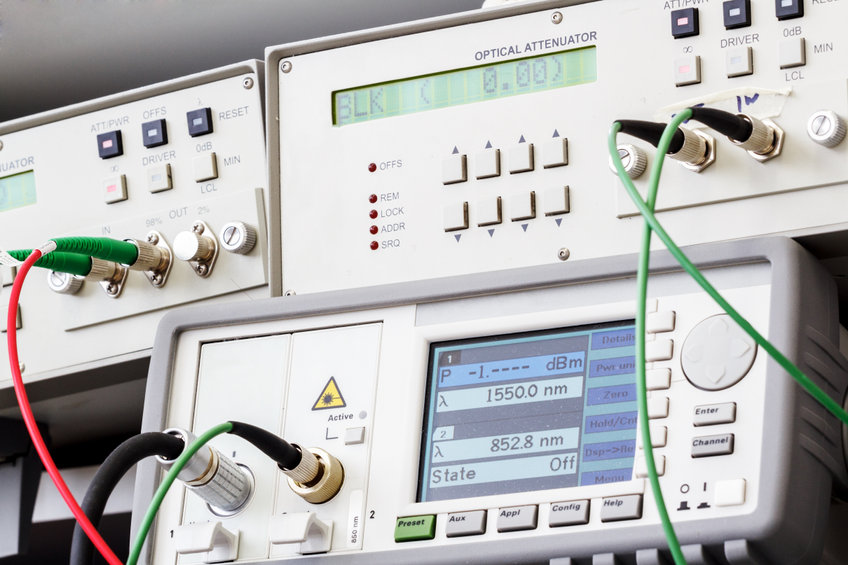Cutting-edge fibre testing equipment identifies defects and maintains fibre integrity.
Wiki Article
Discover the Relevance of Optical Fibre Testing in Modern Telecom
In the realm of modern-day telecoms, the relevance of optical fiber screening can not be overemphasized, as it serves as the backbone for guaranteeing network dependability and efficiency. What are the certain advantages that normal screening deals, and exactly how might it form the future landscape of telecoms?
Recognizing Optical Fiber Screening
Optical fiber screening is an essential process in telecommunications that guarantees the stability and performance of fibre optic networks. This screening includes a variety of treatments developed to examine the physical and practical characteristics of optical fibres - fibre testing equipment. Secret parameters analyzed consist of optical power loss, bandwidth capability, and mistake location, which are necessary for maintaining premium communication web linksThe testing process typically involves using specific tools such as Optical Time-Domain Reflectometers (OTDR) and Optical Power Meters. OTDRs are used to identify and define faults, entwines, and adapters within the fibre, while power meters gauge the transmitted light signal toughness to establish performance.
Additionally, testing is conducted at different phases, consisting of throughout installation, upkeep, and troubleshooting, to ensure that the network satisfies sector standards and functional requirements. Compliance with standards established by companies like the International Telecommunication Union (ITU) and the Telecoms Sector Association (TIA) is critical.
Advantages of Regular Evaluating
Routine screening of optical fibres yields numerous benefits that dramatically boost network dependability and performance. One of the main advantages is the very early detection of possible concerns, such as breaks or deterioration in the fibre, which can lead to costly downtime if left unaddressed (robotic vision). By determining these issues proactively, telecoms service providers can decrease solution disruptions and ensure consistent connectivity for their consumersIn addition, routine screening assists to maintain the honesty of signal top quality. As optical fibres age, their performance can be impacted by variables such as ecological conditions and physical stress and anxiety. Routine assessments permit for the surveillance of signal loss and general transmission efficiency, making sure that the network runs at ideal levels.
Another considerable advantage is conformity with market criteria. Routine screening supports adherence to regulative demands, consequently alleviating legal and financial risks connected with non-compliance. It boosts the overall lifespan of the fibre infrastructure by promoting prompt maintenance and repairs.

Usual Examining Techniques
Testing optical fibres utilizes various methods to make certain the integrity and efficiency of telecommunications networks. Among the most typical strategies is Optical Time Domain Reflectometry (OTDR), which analyzes the whole size of the fibre by sending out a pulse of light and gauging the reflections brought on by imperfections or breaks. This technique offers detailed details about the area and intensity of faults.Another common technique is the usage of Optical Power Meters, which measure the amount of light transferred with the fiber. This method aids figure out the loss of signal strength, guaranteeing that it fulfills industry standards. In Addition, Aesthetic Mistake Locators (VFL) are employed to recognize breaks or extreme bends in the fiber by forecasting a visible laser light right into the cable television.
Insertion loss testing is also important, as it evaluates the loss of signal power resulting from connections and splices within the network. The use of Polarization Mode Diffusion (PMD) screening evaluates the effect of fibre features on signal stability.
Each of these approaches plays an important function in maintaining the efficiency and dependability of optical fiber networks, inevitably adding to seamless telecoms operations.
Influence On Network Performance
The honesty and performance of optical fibre networks directly affect general network efficiency. In contemporary telecoms, the efficiency of data transmission relies heavily on the quality of the optical fibers utilized. Any kind of degradation in the fibre's condition-- whether as a result of physical damage, contamination, or too much bending-- can lead to enhanced attenuation and signal loss, dramatically impacting data integrity and rate.Routine optical fiber screening is important to determine and correct prospective concerns before they show up as network failures or stagnations. Methods such as Optical Time Domain Name Reflectometry (OTDR) and insertion loss screening make it possible for service technicians to measure the efficiency of fiber links precisely. These examinations not just examine the physical condition of the fibres yet also ensure conformity with sector criteria, consequently guarding the network's dependability.
Additionally, a well-kept optical fiber network adds to minimized functional prices and improved client satisfaction, as end-users experience fewer interruptions and greater information rates. Inevitably, the emphasis on strenuous optical fiber screening practices acts as a cornerstone for sustaining durable telecommunications infrastructure, making sure that solution companies can fulfill the expanding demands for transmission capacity and connectivity in today's electronic age.
Future Patterns in Examining
As we look ahead, advancements in modern technology are positioned to reshape optical fiber testing in telecoms. The increase of automation and man-made knowledge (AI) is expected to boost the performance and accuracy of screening processes. Automated screening systems can carry out detailed assessments with very little human intervention, dramatically lowering the potential for errors and accelerating time-to-deployment.Moreover, the assimilation of maker discovering formulas will certainly allow anticipating maintenance, permitting network providers to foresee prospective issues prior to they rise right into failures. optical fibre testing equipment This aggressive strategy not just boosts network reliability yet also maximizes operational costs.
An additional emerging fad is the advancement of mobile testing tools that provide real-time evaluation - robotic vision. These tools will encourage professionals to do on-site diagnostics quickly, facilitating quicker resolutions and boosting service top quality
The expansion of 5G networks further demands the development of testing techniques. As transmission capacity needs increase, conventional screening methods may no longer are enough. Innovative services such as optical time-domain reflectometry (OTDR) and advanced spectral analysis will end up being important in ensuring the integrity and performance of high-speed links.

Conclusion
Finally, optical fibre testing is necessary for making sure the stability and dependability of contemporary telecommunications networks. Routine screening techniques not just help recognize potential concerns such as signal loss and mistakes but likewise add to boosted network performance and client fulfillment. As the need for seamless connection remains to expand, the fostering of sophisticated testing techniques will certainly play an essential duty in maintaining top notch network criteria and sustaining the progressing landscape of telecommunications.Report this wiki page